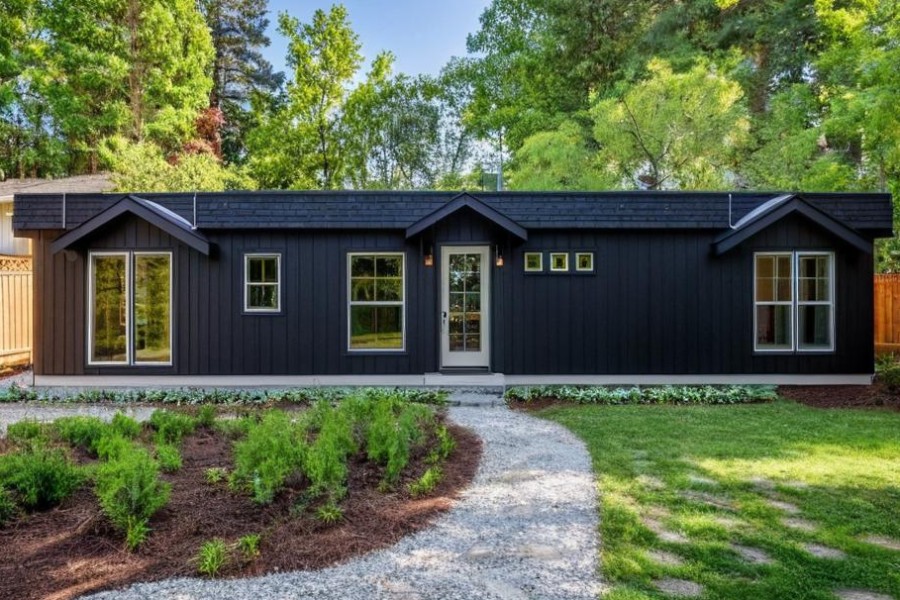Imagine turning part of your backyard into a steady paycheck through rental income. That’s exactly what more Californians are doing by building accessory dwelling units (ADUs). These small, independent living spaces—sometimes called backyard cottages, granny flats, or in-law suites—can serve many purposes. Some families use them as guest houses, home offices, or places for aging parents to live comfortably. But increasingly, homeowners are discovering their power as a financial tool. Even if you don’t need the extra space today, an ADU can provide rental income, financial security, and long-term property value.

How to Earn ADU Rental Income
Once your ADU is complete, the most straightforward way to generate income is by renting it out long-term. Unlike short-term rentals—which require special permits, frequent cleaning, and constant guest management—a long-term lease delivers reliable income with far less hassle.
Homeowners typically list ADUs on platforms like Zillow, Apartments.com, or local rental networks. And because California faces a major housing shortage, most ADUs rent quickly. With the right tenant, you can enjoy consistent monthly rent, less turnover, and a stable landlord-tenant relationship. For most homeowners, this makes long-term rentals the most practical and low-stress way to build steady ADU rental income.
Key Decisions Before Renting Out Your ADU
Before you put your unit on the market, it’s worth stepping back to make some intentional choices.
Tenant Type: A compact one-bedroom often appeals to single professionals. Couples and retirees may look for two bedrooms, while small families gravitate toward larger layouts.
Lease Terms: Month-to-month agreements give you flexibility, while annual leases provide predictability and stability.
Management Approach: You can manage everything yourself—screening tenants, handling repairs, collecting rent—or hire a property manager for convenience.
Privacy Considerations: Will tenants share a driveway, backyard, or laundry space with you? Or will they have a private entrance and yard? Clear boundaries make life easier for both sides.
The clearer you are upfront, the smoother the experience will be once tenants move in.
How Long Until an ADU Pays for Itself?
At SideHaus, two-bedroom ADUs start around $200,000. Here’s what that looks like in practice:
Monthly Rent (Napa, 2BR average): $2,300
Mortgage (30 years @ 8%): $1,468/month
Insurance: ~$800/year
Property Taxes: ~$200/month
In the first year, the ADU nets about $8,400 in profit after expenses. Because rents typically rise while your mortgage stays fixed, that profit grows every year. By around year 11, the unit has paid for itself. From that point on, the ADU is not just covering costs—it’s producing pure rental income while still adding equity to your property.
Why Now Is the Right Time
Three big factors make 2025 the ideal moment for California homeowners to explore ADUs:
High Demand for Affordable Housing – Renters want smaller, cost-effective options that still feel like home.
Streamlined State Rules – State and local agencies are easing restrictions, offering more grants, and strengthening ADU ordinances. In fact, the California Department of Housing and Community Development highlights ADUs as a tool that “can provide a source of income for homeowners”.
Accessible Financing – From HELOCs to credit union ADU loans, new programs make funding easier than ever.
This combination makes ADUs more attainable—and more profitable—than they’ve ever been.
Beyond the Financial Benefit
The most obvious reason to build an ADU is for the rental income—but the benefits don’t stop there.
Increased Property Value: Buyers are drawn to homes with income-producing potential.
Flexible Space: Your ADU can double as a guest house, office, or family housing if life circumstances change.
Better Privacy: Detached ADUs with private entrances give both you and your tenants more comfort. Landscaping, fencing, and soundproofing can make the setup even better.
Types of ADUs
It’s worth knowing the main ADU categories before deciding what works for your property:
Junior ADUs (JADUs): Under 500 sq. ft., must have a kitchen, may share a bathroom with the main house, and are exempt from school impact fees.
Attached ADUs: Share a wall with your home (often garage conversions). Must have their own kitchen, bath, and entrance unless under 500 sq. ft. and classified as a JADU.
Detached ADUs: Standalone units at least 4 feet from the main home, with their own kitchen, bath, and living space. These feel the most private and command higher rents.
Financing Options
The biggest question for many homeowners is how to pay for an ADU. Options include:
Cash-out refinance or traditional mortgage
Home equity loan or line of credit (HELOC)
Specialized ADU loan programs from local banks and credit unions
City and state incentives, especially for smaller units under 750 sq. ft.
Smart financing means your ADU can start covering its own costs almost immediately.
Final Thoughts
ADUs are more than just an extra room or backyard project—they’re a proven way to create passive income, build long-term security, and increase property value. With strong demand, supportive laws, and flexible financing, now is one of the best times to consider whether an ADU could work for your property.
Curious if your backyard qualifies? Get a free virtual property report tailored to your home.
